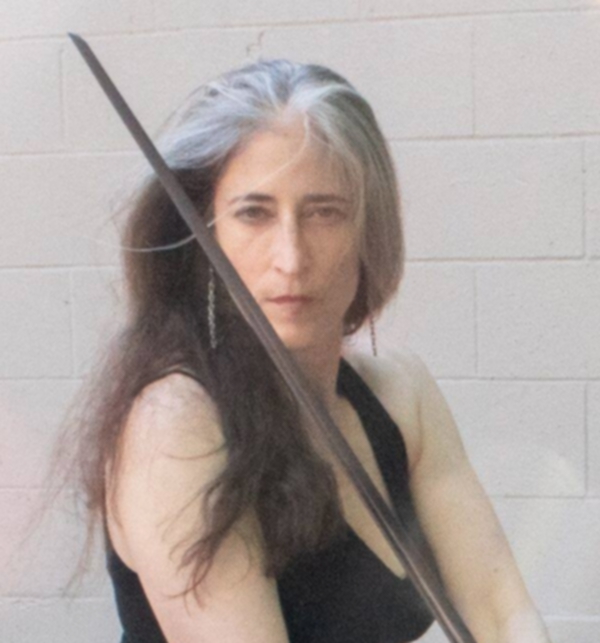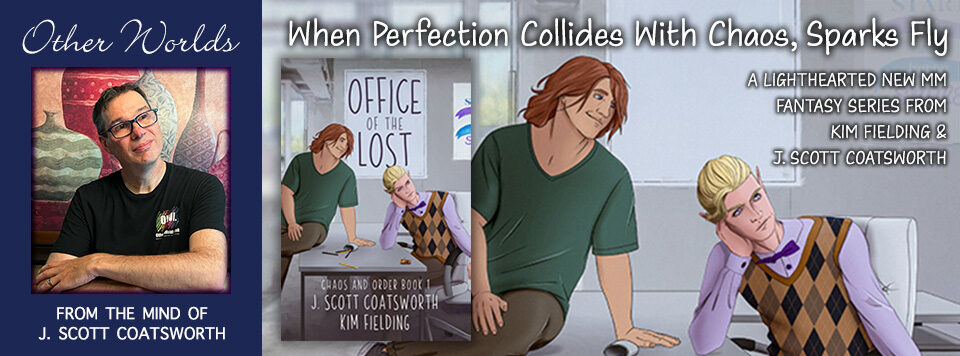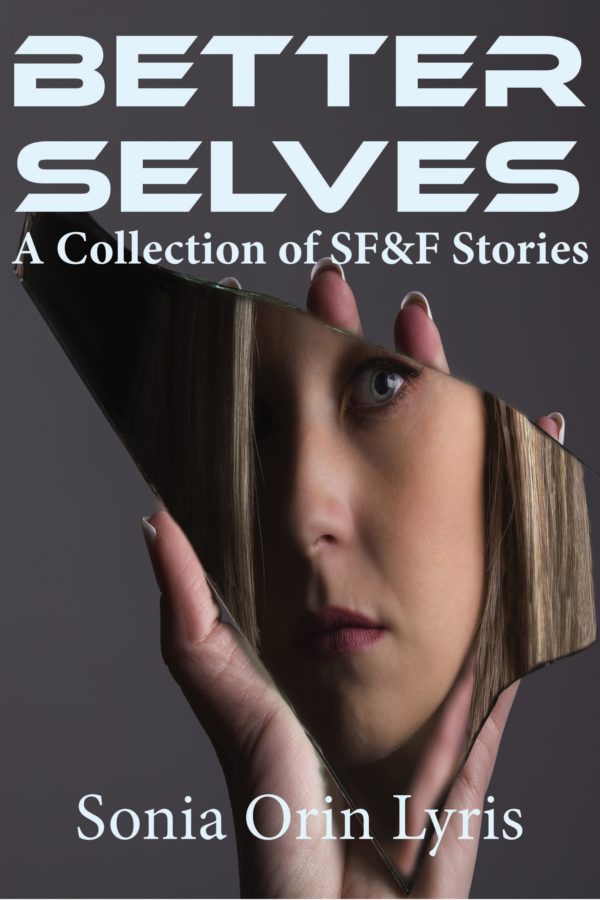
Welcome to my weekly Author Spotlight. I’ve asked a bunch of my author friends to answer a set of interview questions, and to share their latest work.
Today: Sonia Orin Lyris’s stories have been published in various places, including Asimov’s SF Magazine, Wizards of the Coast anthologies, and Uncle John’s Bathroom Reader. Her stories have been called “immersive,” “ruthless,” and “unsparing.” She is the author of The Seer Saga, an epic high-fantasy series, and co-creator of Rochi, a divination and gambling game from Campaign Coins. Her hobbies include dance, martial arts, decoding reality, fine chocolate, humans, and feline poetry. She loves to hear from readers. Drop a note.
Thanks so much, Sonia, for joining me!
J. Scott Coatsworth: What’s the weirdest thing you’ve ever done in the name of research?
Sonia Orin Lyris: Choreographed and enacted an intense chase and attack scene. With weapons.
This happens when you have a lifetime of martial arts experience. You think to yourself, hey, I should just try it and see.
I had a friend, male and big, big enough to make me seem like my main character, a fourteen year old girl, by comparison. With his help, step-by-step we worked out the action, the chase, and the surprise turnaround, all of which became what’s often referred to as “The forest scene” in my book The Seer.
At the turning point of the scene (and yeah, this is a spoiler, sorry), I was on my back, him pinning me, a knife at my throat. A sharp knife.
Good thing I trusted him.
All this gave the written scene a solidity and vividness that my imagination could never have matched.
My editor at Baen Books once told me that it was the best fantasy fight scene he’d ever read.
JSC: Do you ever base your characters on real people? If so, what are the pitfalls you’ve run into doing so?
SOL: All my characters are real people. What are you talking about?
Yes, I know what you mean.
But you also know what I mean, right?
My characters are real to me. That’s how I can make them real to you.
Sometimes I think that my characters come from another spacetime, seeping into this one through my fingers, onto the page.
Wherever they come from, my job is to make sure that the time they spend in my world is a good time, and the story is true to who they are.
If a reader sees themselves in my story, that’s gratifying. There’s a universality to characters, or there ought to be, since that’s really the point of telling their story.
But if I tried to base a character on a flesh-and-blood person, I’d fail; how can I know someone well enough to encompass their complexity?
A created character is necessarily a composite, a newly made creature that steps out of the ooze of imagination, demanding to be given an action role.
JSC: What do you do if you get a brilliant idea at a bad time?
SOL: Save it. Let the idea soak, marinade, and burn a story into my mind. Let it make me crazy to get back to the keyboard.
Look, ideas are easy. Even brilliant ones. It’s putting words on metaphorical paper–words that have life, spirit, sizzle, and pop–that’s the hard part.
Ideas? Ha! I’m having one right now.
JSC: What is the most heartfelt thing a reader has said to you?
SOL: “Are you the Sonia Orin Lyris?”
I liked that one. As if there might be two.
“You changed my life.”
That was pretty good, too. Made my day.
But I think my all-time favorite was:
“Holy shit! That was awesome! Hell yeah, strong women! Hell yeah, well-outlined magic systems, hell yeah detailed and storied past that pays dividends!”
That was from a reader who had just finished “The Seer.”
Comments like that make rejections seem irrelevant.
JSC: What tools do you feel are must-haves for writers?
SOL: Unreasonable confidence and hell-bent persistence.
A willingness to make big, juicy mistakes, right there on the page.
Feeding the writer-brain by reading and consuming stories.
Finding (and keeping) excellent first readers. Learning to recognize which suggestions to take, which to ignore, and how not to take any of them personally.
Most importantly: the act of writing. A lot of writing. More.
JSC: What character gave you fits and fought against you? Did that character cause trouble because you weren’t listening and missed something important about them?
Yes and yes. That would be Susan Langley, my most neuro-atypical character, which is saying a fair bit.
When I wrote “Shelter from the Storm,” I had to go deep into Susan’s mind. While I was there, I never knew what I was going to think next.
I rode the waves of her reality. A boat in a storm, sometimes dipping below the waterline.
Susan knew what she was doing, though. I just had to trust her.
JSC: Let’s talk to your characters for a minute – what’s it like to work for such a demanding writer?
SOL: “Not so bad, really.” Celeste raised a tulip-shaped glass of Glenlivet in a half-toast, examined it thoughtfully, took a sip of amber liquid, and made an appreciative sound.
“When I needed an excellent outfit and some kick-ass tech,” she continued, “Lyris was right there for me. Also, the part about nearly dying but managing to escape in a terrifying-yet-believable manner? That was a blast.”
Celeste’s easy grin said that this wasn’t her first drink of the evening and was unlikely to be her last. She gestured with the glass, cradling the glass bowl between long fingers.
“My biggest complaint? Sometimes I wish she’d get a bit more flowery and lurid with the words, instead of sticking to that minimalist clean-prose shit. I mean, come on. Kick it up, girl–you’re not getting paid to write tight. Live a little.”
Celeste raised an eyebrow. “Get you a drink?”
JSC: Tell me one thing hardly anyone knows about you.
SOL: I think that most of what we humans think and see going on around us is sufficiently abstracted from whatever true reality exists that it’s essentially illusion. I think the rules we live by are constructed out of air and story.
And yet, ironically, I believe that story can be truer than anything else humans create.
I also think that the connections between people, those genuine moments when we feel the other, that marvelous and magnificent spirit beside us, are the most real thing of all.
JSC: What’s your writing process?
SOL: There’s a process? Cool.
Here’s what I do: Imagine things. Pretend I know what I’m doing. Put my fingers on the keyboard. Type.
Pause as the first demon asks if I know what I’m doing.
Show the demon to the door. Gently push it outside. Tell it to go play in traffic.
Back to the story. Type some words.
Pause as the next demon pops up between me and the screen, and asks, too softly, if maybe this is all a waste of time.
Slam that one to the floor, truss it like a pig, and toss it out the window to land on soft clouds below. Or on the other demon.
Type some more words.
Glare at the third demon, who wonders if maybe I should be working on the other story, which is so much better than this one which probably sucks.
“Yeah?” I ask, leaning back in my chair. “You think so? Gotta finish this one first. You figure out how this one ends, and we do the next. Go on. Show me how it’s done.”
And that is how some of my stories get finished, by one of my clever demons.
A writer can’t be too proud to accept help.
JSC: What are you working on now, and what’s coming out next? Tell us about it!
I’m finishing up a novel about witches and demons, called The Unturned Stone. This story touches on the tension between the ancient forest and humanity’s relentless demand for new housing development.
Also, what it means to be unlike others, to feel that you don’t fit, and how to weave ourselves together into a whole that is more than the parts.
And demons! Always fun to have those around.
The Unturned Stone will be available for preorder in November, from Knotted Road Press.
Follow me on Facebook, Twitter, or Patreon for updates.
And now for Sonia’s latest book: Better Selves:
What happens when we fail ourselves? When we look in the mirror and don’t like what we see?
In these five tales are explorations of self–who are we when we’re not at our best and how we can–at least sometimes–find our way back to our better selves.
If you like stories that gaze unflinchingly into the nature of self, with a side-shot of entertainment and adventure, this collection is for you.
Amazon | Barnes & Noble | Universal Buy Link
Excerpt
MARGUERITE ALLOHAY BOARDED the South Lake Union Transit train, followed by snickering tourists who had just worked out the acronym. She slid into a window seat and stared out at a suddenly overcast Seattle. Hadn’t it been sunny just a bit ago, on her walk to the train? That must have been summer, right there. An old joke but still somehow grimly hilarious to sun-starved Seattle natives.
It was the final leg of her trip from Redmond via light rail from ULearnIT—you’d think they could afford a decent name—where she had just finished her second and perhaps final interview.
It had, to all appearances, gone well. Well enough that, baring a few details, she might even make their short list.
Passing the Tesla dealership she remembered a webcast about a women’s version, not pink but mauve and cheap enough that someone like her could afford it if she never ever wanted to own a home. For a moment she imagined walking in, zeroing out her credit and driving off into the sunset. Or, given this wretched overcast, into the slowly darkening gloom. Just putting this whole silly job idea out of her head.
Details. Wasn’t that where the devil lived?

